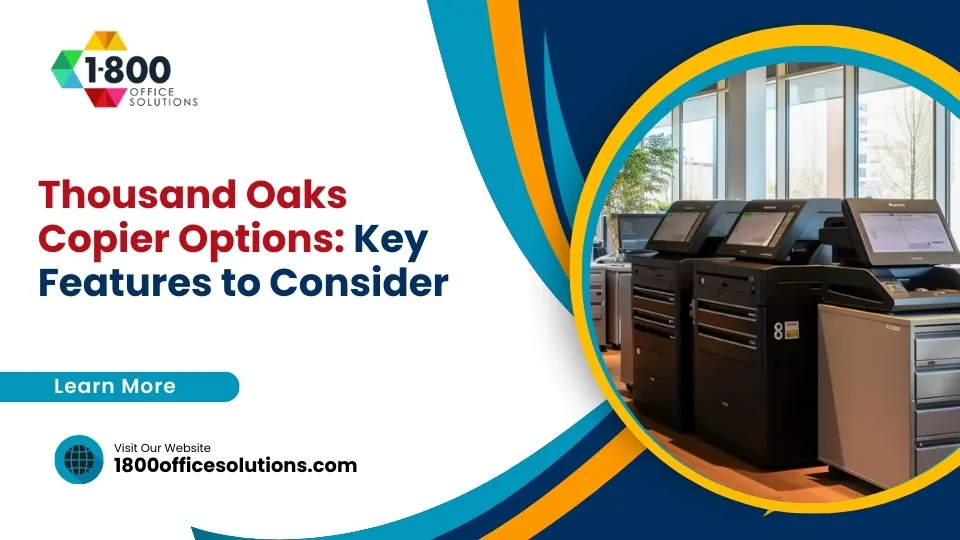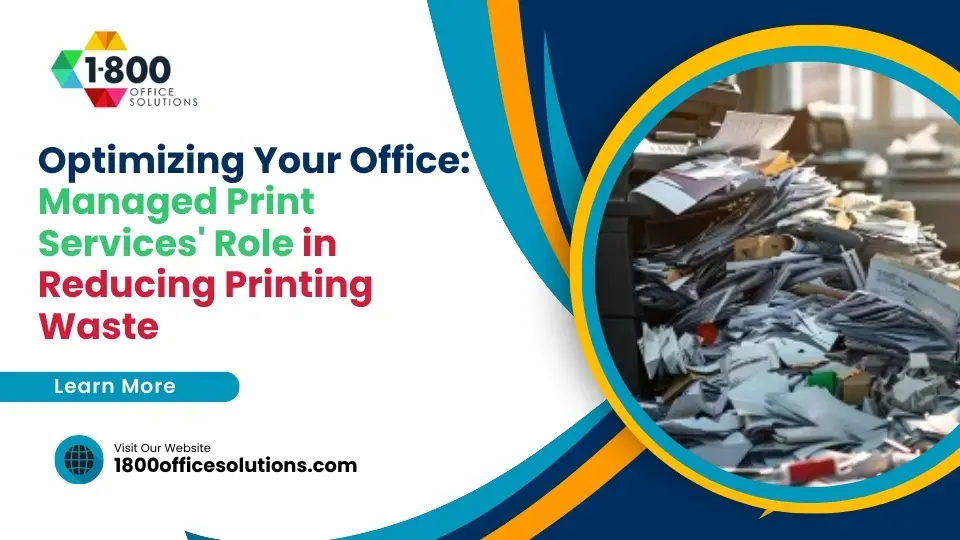Optimizing Office Printing: How Managed Services Reduce Costs
How Managed Services Reduce Costs
Many businesses underestimate the true cost of office printing. In reality, excessive consumption and inefficient processing can significantly inflate expenses. This article will explore managed print services (MPS) and how they streamline check printing and access control, leading to cost reductions. Readers will learn about the benefits of MPS, practical steps to optimize printing processes, and real-world examples of savings. By addressing these common issues, this content aims to help business owners create more environmentally friendly printing practices while improving efficiency and reducing costs.
Understanding the True Cost of Office Printing

Understanding the true cost of office printing involves identifying hidden printing expenses, assessing inefficient printer usage, and evaluating the impact of outdated equipment. Organizations must also analyze maintenance and supply costs, especially as remote work becomes more prevalent. These factors significantly affect employees’ productivity and overall inventory management, making it essential to address them in any service contract aimed at optimizing costs.
Identifying Hidden Printing Expenses
Identifying hidden printing expenses is crucial for businesses looking to optimize their office printing costs. These expenses often go unnoticed, such as excessive paper consumption and ink usage, which can significantly raise overhead. Implementing an effective program that integrates tools like accounting software can help organizations track usage patterns across their workforce, identify inefficiencies, and minimize their carbon footprint while lowering overall printing costs.
Assessing Inefficient Printer Usage
Assessing inefficient printer usage is essential for improving cash flow and enhancing overall workflow. Many businesses may not realize that underutilized office printers or excessive printing of documents can lead to unnecessary costs. Implementing strategies such as integrating document management systems can streamline printing processes, reduce waste through recycling initiatives, and ensure that organizations only print what is necessary, ultimately saving money and resources.
Evaluating the Impact of Outdated Equipment
Evaluating the impact of outdated equipment is vital for organizations aiming to optimize their office printing processes. Older printers often require more resources, leading to increased costs associated with ink cartridges and maintenance. Furthermore, businesses may struggle with effective project management and accounting if their equipment lacks digital transformation capabilities, resulting in inefficiencies that hinder overall productivity and contribute to higher overhead expenses.
Analyzing Maintenance and Supply Costs
Analyzing maintenance and supply costs is essential for businesses seeking to manage their printing infrastructure effectively. Regular audits of office supplies and equipment usage can reveal areas where expenses are accumulating, particularly in color printing, which often incurs higher costs than black and white. By integrating a document management system, organizations can streamline their processes, reduce waste, and maintain optimal inventory levels, ultimately lowering unnecessary costs associated with printer maintenance and supplies.
Introducing Managed Print Services (MPS)
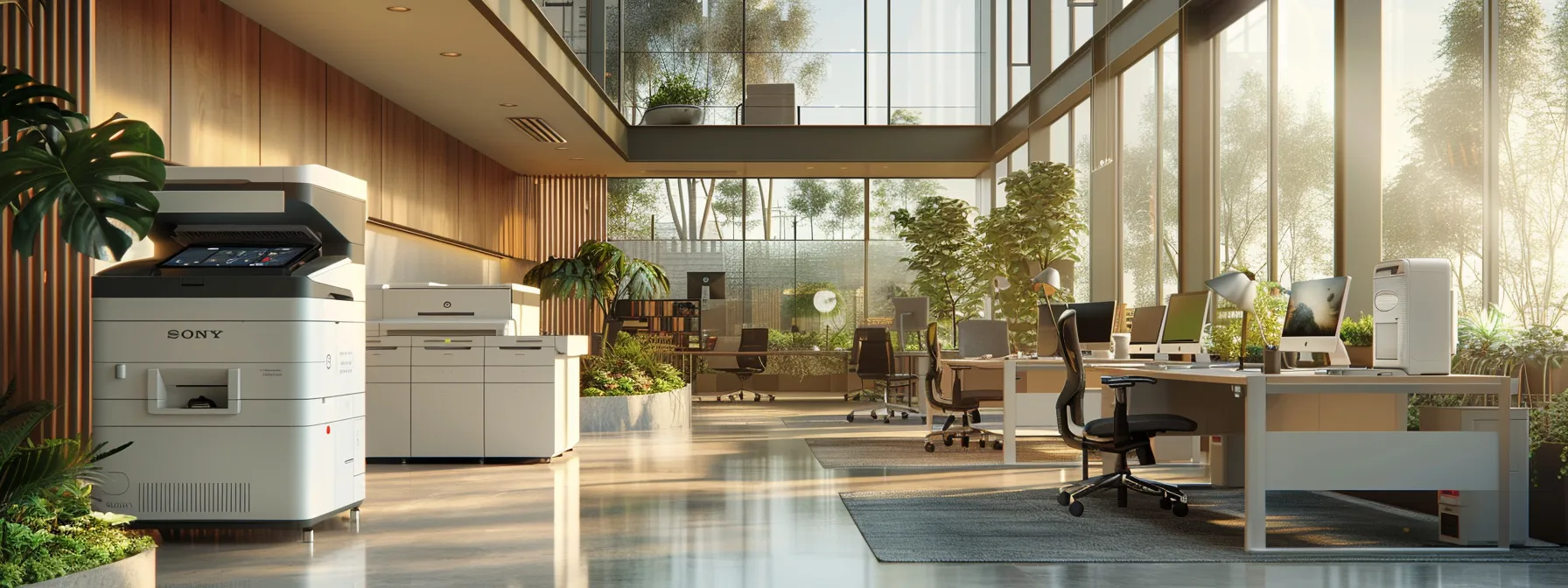
Managed Print Services (MPS) encompass a comprehensive approach to managing printing resources, optimizing procurement, and enhancing employee efficiency. By leveraging MPS, businesses can streamline their printing processes, reduce unnecessary costs, and improve the management of their printing machines. This section will explore how MPS enhances printing efficiency and contributes to significant cost reductions across the organization.
Defining Managed Print Services
Managed Print Services (MPS) refer to a strategic approach that helps organizations optimize their office printing needs while reducing costs related to toner and maintenance. By leveraging innovative technologies, MPS addresses fluctuating demand and enhances production printing efficiency, leading to improved workflow and reduced waste. Implementing MPS allows businesses to gain better visibility into their printing processes, ensuring that resources are used effectively and ultimately supporting long-term sustainability goals.
How MPS Enhances Printing Efficiency
Managed Print Services (MPS) significantly enhance printing efficiency by providing businesses with greater visibility into their print jobs and usage patterns. By analyzing data from client print activities, organizations can identify trends and potential issues, reducing downtime and optimizing the deployment of resources. This proactive approach not only streamlines operations but also ensures that employees have access to reliable printing solutions, ultimately contributing to a more productive work environment.
The Role of MPS in Cost Reduction
Managed Print Services (MPS) play a significant role in cost reduction by enabling businesses to streamline their printing processes and manage resources more effectively. By analyzing printing expenses, organizations can identify unnecessary costs associated with ink cartridges and paper usage, leading to substantial cost savings over time. Furthermore, MPS promotes sustainability through improved resource management, helping businesses reduce waste while optimizing their search engine optimization strategies by ensuring documentation is accessible and efficiently printed as needed.
Benefits of Implementing Managed Print Services
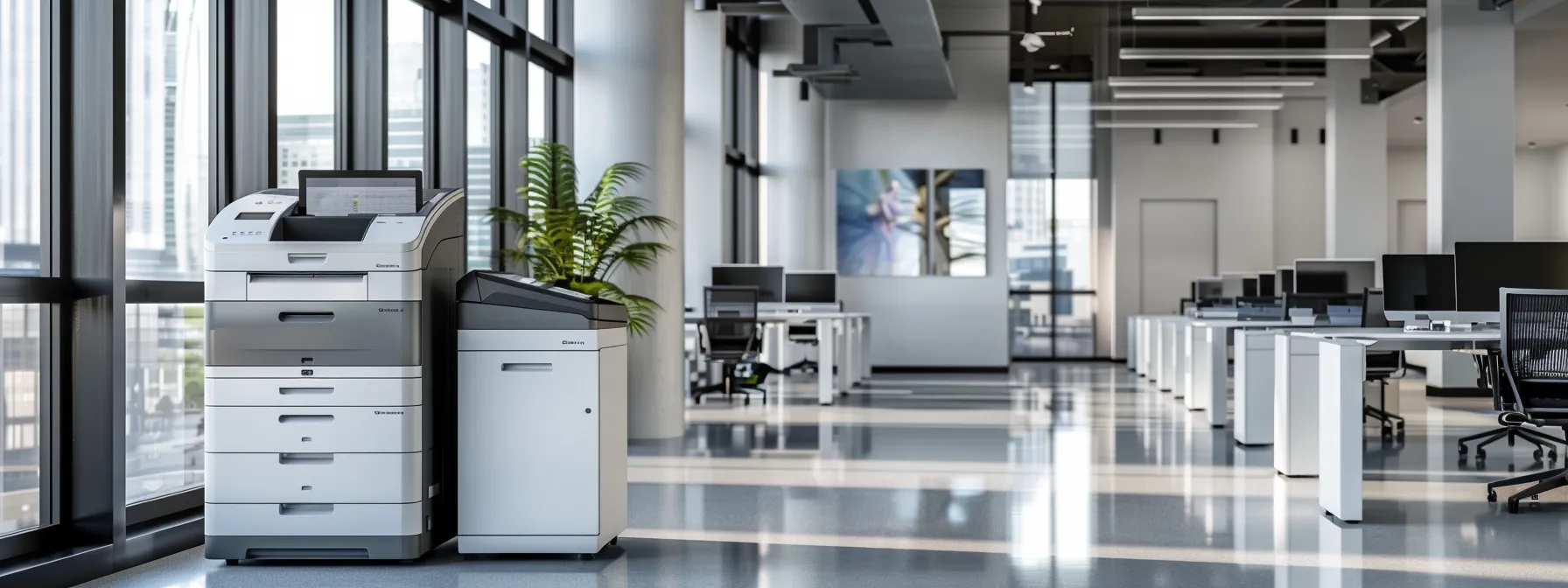
Implementing Managed Print Services (MPS) offers numerous benefits that can significantly impact a business’s bottom line. By reducing overall printing expenses, MPS enables organizations to allocate resources more effectively, enhancing workflow productivity. Additionally, MPS strengthens document security through advanced authentication measures, minimizes environmental impact through sustainable practices, and ultimately supports revenue growth by optimizing operations. The following sections will explore each of these key benefits in detail.
Reducing Overall Printing Expenses
Reducing overall printing expenses through Managed Print Services (MPS) significantly benefits organizations by implementing automation and efficient workflows. By utilizing features such as duplex printing, businesses can cut paper usage and lower costs associated with toner cartridges. Moreover, managing printer ownership effectively helps prevent issues such as printer redundancy and data breaches, leading to enhanced security and improved budget control.
Enhancing Workflow Productivity
Enhancing workflow productivity through Managed Print Services (MPS) significantly supports business operations by streamlining printing tasks and integrating cloud computing solutions. By utilizing advanced inventory management software, organizations can monitor printer supplies and usage efficiently, reducing the time spent on managing invoices and reordering materials. This proactive approach not only lowers energy consumption but also strengthens network security, ensuring sensitive documents are printed securely while maintaining an efficient workflow throughout the organization.
Strengthening Document Security
The implementation of Managed Print Services (MPS) significantly strengthens document security by minimizing waste and managing sensitive information more effectively. With an integrated approach, businesses can utilize mobile devices to access secure printing features, ensuring documents are only printed when needed and reducing the risk of unauthorized access. By enhancing knowledge of print activity and tracking usage, organizations can lower their total cost of ownership while maintaining efficiency in their printing operations, ultimately supporting a more secure and productive work environment.
Minimizing Environmental Impact
Minimizing environmental impact through Managed Print Services (MPS) involves implementing a comprehensive policy that promotes responsible printing habits. By optimizing document workflow and reducing paper usage, businesses can effectively lower their carbon footprint while enhancing their supply chain efficiency. Outsourcing printing management not only helps organizations harness the necessary skill to execute sustainable practices but also drives long-term cost savings that contribute to a healthier planet.
Steps to Optimize Office Printing With MPS
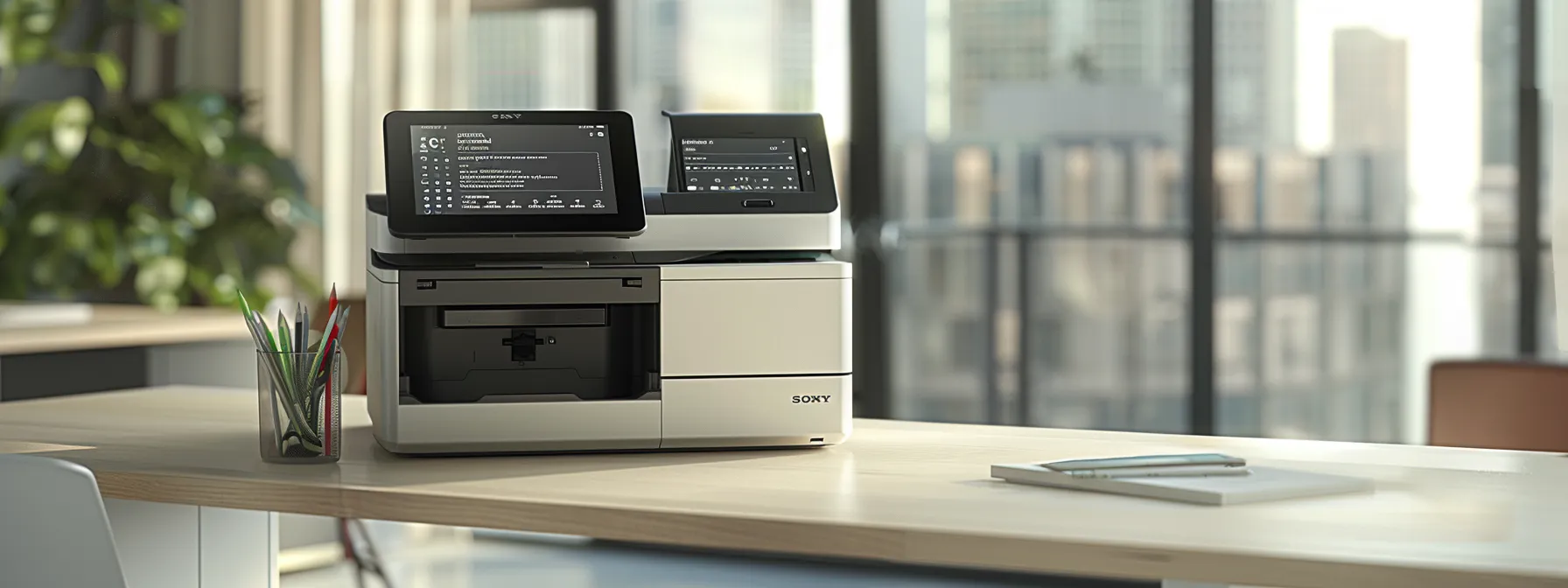
Organizations can optimize office printing through Managed Print Services (MPS) by implementing key strategies. Conducting a comprehensive print assessment helps identify current inefficiencies. Establishing effective printing policies ensures regulatory compliance and enhances workflows. Upgrading to energy-efficient devices reduces costs, while utilizing user authentication systems improves accessibility. Monitoring and managing print usage leads to better resource allocation and reduced expenditure.
Conducting a Comprehensive Print Assessment
Conducting a comprehensive print assessment is essential for organizations aiming to optimize their office printing processes. This assessment focuses on evaluating the use of copiers and printers, analyzing ink consumption, and understanding document flow to identify areas where efficiency can be improved. By paying attention to these factors, businesses can mitigate risks related to excessive printing costs and ensure that resources are allocated effectively, ultimately leading to significant savings and improved productivity.
Establishing Effective Printing Policies
Establishing effective printing policies is essential for organizations aiming to streamline their printing processes and reduce costs with Managed Print Services (MPS). By setting clear guidelines that regulate printing practices, businesses can minimize waste and enhance resource allocation. Organizations seeking tailored business solutions can benefit significantly from these policies, ensuring they utilize their printing resources effectively. For further assistance in developing these policies, companies can reach out and Contact Us for expert guidance and support.
Upgrading to Energy-Efficient Devices
Upgrading to energy-efficient devices is a critical step in optimizing office printing costs through Managed Print Services (MPS). Modern printers and copiers designed for energy efficiency consume significantly less power during operation, leading to substantial savings on utility bills over time. Additionally, these devices often implement features such as automatic duplex printing, which further reduces paper waste and contributes to a lower overall environmental footprint, making them a smart choice for cost-conscious businesses.
Utilizing User Authentication Systems
Utilizing user authentication systems is an effective strategy to enhance office printing efficiency through Managed Print Services (MPS). By requiring users to authenticate themselves before accessing printers, organizations can significantly reduce unauthorized printing and minimize waste. This approach not only conserves resources but also ensures that sensitive documents are securely managed, addressing security concerns while supporting cost reduction initiatives.
Monitoring and Managing Print Usage
Monitoring and managing print usage is a key factor in optimizing office printing and reducing costs through Managed Print Services (MPS). By implementing advanced tracking systems, organizations can gain insights into their printing patterns, identifying areas of excessive usage or waste. This data-driven approach not only helps businesses allocate resources more effectively but also encourages employees to adopt more sustainable printing habits, ultimately leading to significant cost savings and enhanced productivity.
Real-World Examples of Cost Savings With MPS
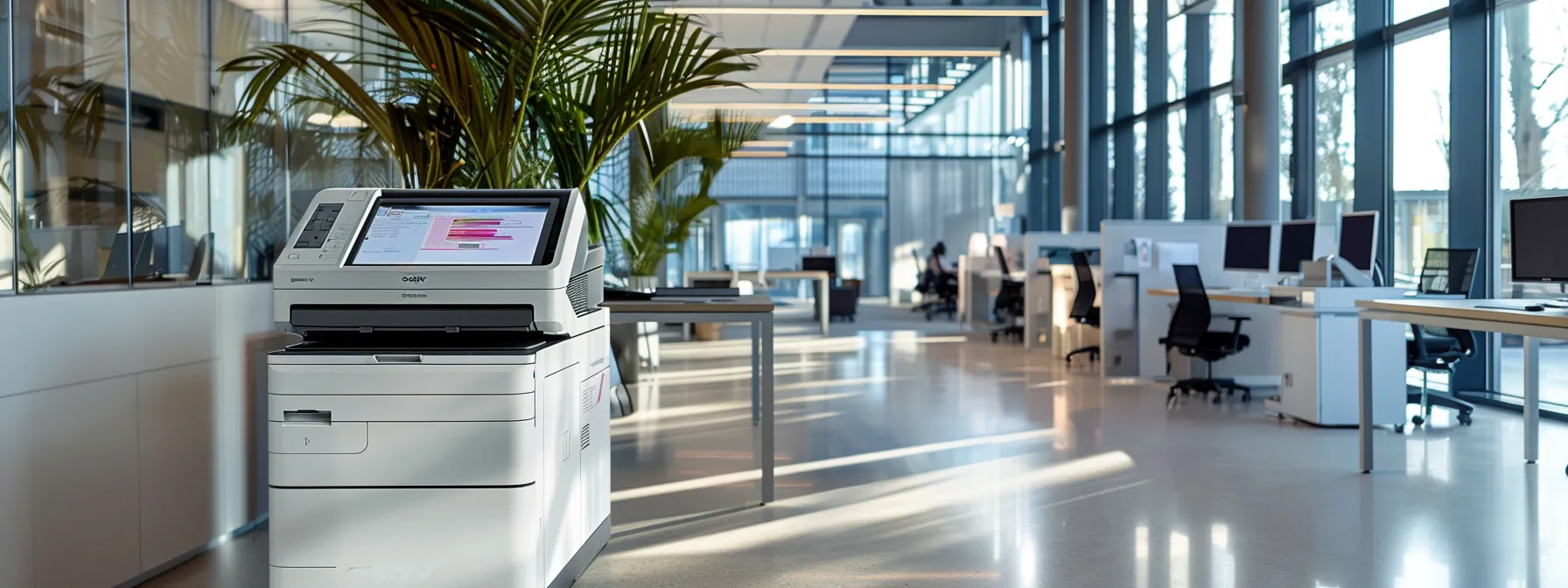
Several organizations have realized substantial cost savings through Managed Print Services (MPS). Company A demonstrates significant financial improvements by optimizing its printing processes. Small Business B showcases how streamlined operations lead to enhanced efficiency, while Organization C illustrates the benefits of improved security and reduced waste. Each example highlights the tangible advantages of adopting MPS in various business contexts.
Company a Achieves Significant Savings
Company A successfully implemented Managed Print Services (MPS) and reported a remarkable 30% reduction in printing costs within the first year. By conducting a thorough print assessment and optimizing their resources, they minimized waste from color printing and underutilized devices. This strategic approach not only resulted in significant savings but also improved document security and overall operational efficiency, allowing Company A to focus resources on core business activities.
Small Business B Streamlines Printing Processes
Small Business B successfully streamlined its printing processes through the implementation of Managed Print Services (MPS), resulting in a 25% reduction in overall printing costs. By integrating a centralized document management system, the business improved its print job tracking and significantly reduced unnecessary color printing. This strategic shift not only optimized resource usage but also enhanced employee productivity, allowing Small Business B to allocate more time to core business activities.
Organization C Improves Security and Reduces Waste
Organization C effectively implemented Managed Print Services (MPS), resulting in enhanced security protocols and a significant reduction in waste. By adopting an integrated printing approach, they were able to monitor and control print jobs more efficiently, ensuring sensitive documents were only printed when necessary. This not only minimized unnecessary paper usage but also fortified data security, showing how MPS can streamline office operations while addressing key concerns regarding document confidentiality and resource conservation.
Choosing the Right Managed Print Service Provider

Choosing the right Managed Print Service provider is crucial for optimizing office printing and reducing costs. Organizations should evaluate a provider’s expertise and experience to ensure effective management of printing needs. Reviewing service level agreements is vital for understanding expectations, while considering scalability prepares businesses for future requirements. Assessing support and maintenance services guarantees ongoing assistance and enhances the overall printing experience.
Evaluating Provider Expertise and Experience
When evaluating a Managed Print Service provider, organizations should prioritize expertise and experience as key factors in their decision-making process. A provider with a proven track record in office printing solutions will have the necessary knowledge to understand specific business needs and challenges, enabling them to offer tailored solutions that drive efficiency and cost savings. For instance, companies can benefit from providers who bring industry certifications and a history of successful implementations, ensuring they are equipped to handle varying print environments while delivering exceptional support and optimized resource management.
Reviewing Service Level Agreements
Reviewing service level agreements (SLAs) is a critical step in selecting the right Managed Print Service (MPS) provider for optimizing office printing and reducing costs. Businesses should pay close attention to the terms outlined in the SLA, including response times for service requests, maintenance schedules, and provisions for supply replenishment. Clear SLAs not only ensure accountability and set expectations but also protect organizations from unexpected costs, therefore enhancing the productivity and efficiency of their printing operations.
Considering Scalability for Future Needs
Considering scalability for future needs is essential when choosing a Managed Print Service (MPS) provider. As businesses evolve, their printing requirements may change, making it vital for the selected provider to offer flexible solutions that can grow alongside the organization. For instance, a company anticipating expansion might benefit from a provider that can easily integrate additional printers and technologies, ensuring consistent efficiency while maintaining control over printing costs.
Assessing Support and Maintenance Services
When assessing support and maintenance services from Managed Print Service providers, organizations should consider the responsiveness and reliability of support offered. Effective support includes timely responses to service requests and regular maintenance schedules that minimize downtime for printing devices. By prioritizing providers who excel in customer service, companies can ensure swift resolutions to any issues, ultimately enhancing productivity and reducing overall printing costs.
Conclusion
Optimizing office printing through Managed Print Services (MPS) is essential for businesses seeking to reduce costs and enhance efficiency. By identifying hidden expenses, assessing printer usage, and upgrading to energy-efficient devices, organizations can significantly lower their printing overhead. MPS not only streamlines workflows but also strengthens document security and promotes sustainable practices. Embracing these strategies empowers businesses to allocate resources more effectively, ultimately driving productivity and supporting long-term growth.




